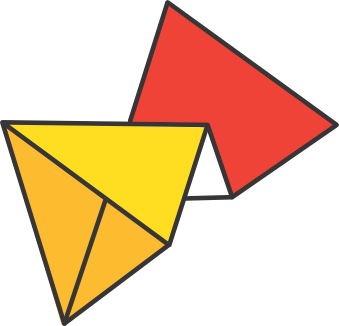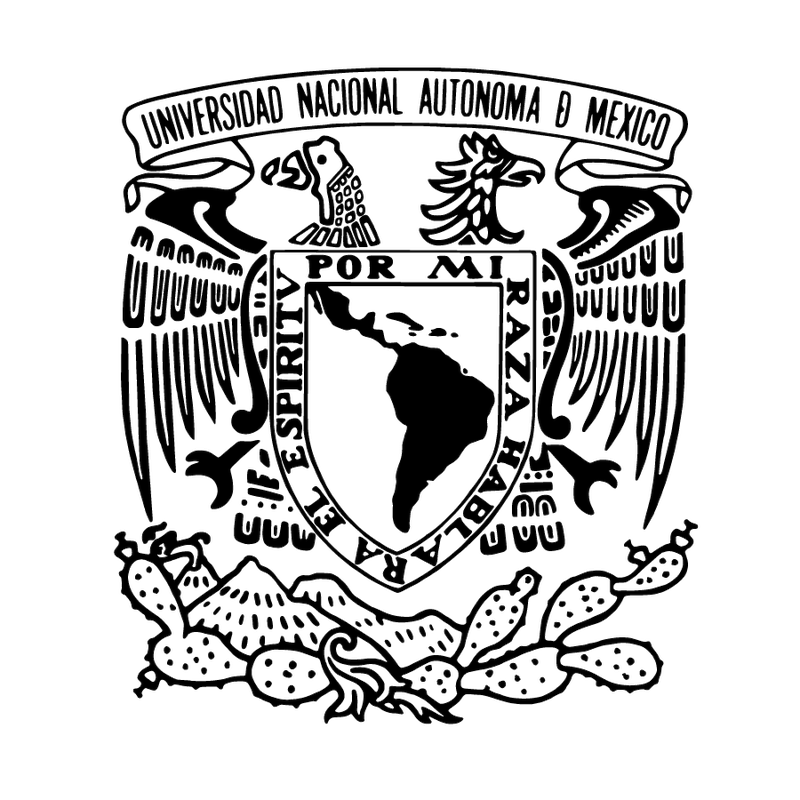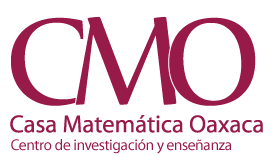Cluster Varieties and Mathematical Physics

Description: This is a focused workshop whose aim is to bring a group of researchers interested on the connections of cluster varieties with mathematical physics.
Registration, funding and accommodation
Registration: Due to limited seating capacity in the lecture hall, those who are interested in participating should send an e-mail to the organizers including their name, e-mail address, affiliation and a brief letter of intent.
Funding: Accommodation expenses for invited speakers will be covered by UNAM and CONACyT. Unfortunately, we are not able to provide financial support for other participants.
Accommodation: All the invited participants are offered accommodation at the Hotel Hacienda Los Laureles. Other participants that would like to attend the event are expected to arrange their accommodation by themselves.
Program:
Schedule:
Speakers
Dylan Allegretti
The University of Sheffield
Stability conditions and cluster varieties from surfaces
Abstract: This lecture series will focus on the relationship between two spaces associated to a quiver with potential. The first is a complex manifold parametrizing Bridgeland stability conditions on a triangulated category, and the second is a cluster variety with a natural Poisson structure. Work by the physicists Gaiotto, Moore, and Neitzke suggests that these spaces are related in a highly nontrivial way involving Donaldson-Thomas invariants and the Kontsevich-Soibelman wall-crossing formula. I will report on ongoing joint work with Tom Bridgeland, which aims to develop a rigorous mathematical understanding of this relationship in the case where the quiver with potential arises from a triangulation of a marked bordered surface.
A central concept in our work is the notion of a "meromorphic projective structure" on a Riemann surface. In the first lecture of this series, I will introduce a moduli space parametrizing meromorphic projective structures. This space is closely related to a space of meromorphic quadratic differentials which Bridgeland and Smith identified with the space of stability conditions on a triangulated category. I will also review the notion of a framed local system on a marked bordered surface. By the work of Fock and Goncharov, the moduli stack of framed local systems is birational to a cluster variety.
In the second lecture, I will describe a natural map from the space of meromorphic projective structures to the stack of framed local systems. This map sends a meromorphic projective structure to its monodromy local system, equipped with a natural framing defined by Stokes data. The image of this map is contained in the cluster variety. I will comment on the relationship between this construction and the work of Iwaki and Nakanishi in the theory of exact WKB analysis.
In the third lecture, I will specialize to the case where the marked bordered surface is a disk with finitely many marked points on its boundary. In this case, the monodromy map constructed in the second lecture specializes to a construction of Sibuya in the classical theory of ordinary differential equations. I will explain how it can be interpreted as a local biholomorphism from the space of stability conditions to the cluster variety. I will explain the relationship between the wall-and-chamber decomposition of the space of stability conditions and the decomposition of the cluster variety as a union of algebraic tori.
Lara Bossinger
University of Cologne
Toric degenerations of Grassmannians
Abstract: Toric degenerations arise in variuos contexts such as tropical geometry, from cluster algebras, and representation theory. In this talk I will compare for Gr(2,n) two construction of such: the first from the tropical Grassmannian as introduced by Speyer and Sturmfels and the second from the cluster structure realized combinatrially through plabic graphs as studied by Rietsch and Williams. The main result is that toric degenerations from the cluster algebra approach can be realized in the tropical geometry setting. This talk is based on joint work with X.Fang, G.Fourier, M.Hering and M.Lanini (arXiv:1612.03838)
Man-Wai Cheung
Harvard University
Quiver representations and theta functions
Abstract: Scattering diagrams theta functions and broken lines were developed in order to describe toric degenerations of Calabi-Yau varieties and construct mirror pairs. Later, Gross-Hacking-Keel-Kontsevich unravel the relation of those objects with cluster algebras. In the talk, we will discuss how we can combine the representation theory with these objects. We will also see how the broken lines on scattering diagram give a stratification of quiver Grassmannians using this setting.
Michele Del Zotto
Stony Brook University
Michael Gekhtman
University of Notre Dame
Cluster structures on Poisson-Lie groups
Abstract: The goal of the mini-course is to use Poisson geometry approach to construct a family of non-isomorphic (generalized) cluster structures on GL(n). To this end we will
- briefly recall the basic facts on Poisson brackets and Hamiltonian flows, review the notion of a Poisson bracket compatible with a cluster algebra structure and illustrate its utility by describing a Hamiltonian approach to verify dilogarithm identities in cluster algebras;
- provide a motivation for and various versions and examples of generalized cluster structures;
- review a construction of a generalized cluster structure in the Drinfeld double of GL(n) and of exotic cluster structures in GL(n) compatible with Poisson-Lie brackets covered by the Belavin-Drinfeld classification.
Timothy Magee
UNAM
Toric degenerations of X-cluster varieties
Abstract:In this talk I’ll describe how scattering diagrams give rise to partial compactifications of X-cluster varieties, and toric degenerations of these partial compactifications. Scattering diagrams are an important tool in the Gross-Siebert mirror symmetry program. They were introduced to the cluster community by Gross, Hacking, Keel, and Kontsevich, who used scattering diagram techniques to prove several conjectures about cluster algebras (e.g. positivity). A portion of the scatte-ring diagram (called the cluster complex) has a fan structure in which each maximal cone is spanned by the g-vectors of the A-cluster variables of some seed. Fock and Goncharov used this structure to define a partial compactification of the dual X-variety (which they call the special completion of X) and gave the boundary components a clean Teichmüller theory interpretation. By introducing coefficients carefully, for each seed we get a toric degeneration of the special completion of the X-variety, where the toric central fiber is given by the fan associated to the cluster complex by the choice of seed. X-variables extend canonically to functions on the total space. The total space has a natural torus action, and the extended X-variables are eigenfunctions of this action whose weight is precisely the c-vector of the X-variable. Time permitting, I will also discuss how this construction relates to Nakanishi and Zelevinsky’s tropical duality of g- and c-vectors. This is based on ongoing work with Lara Boßinger, Juan Bosco Frías Medina, and Alfredo Nájera Chávez.
Mauricio Romo
IAS Princeton University
Cluster algebras, SL(N,C) flat connections and 3-manifolds
Abstract: SL(N,C) Chern-Simons theory have been getting some increasing interest in math and physics in the last years. I'll describe some recently developed techniques inspired by string theoretical constructions, that makes use of the connection between higher Teichmuller theory and cluster algebras to produce topological invariants of hyperbolic 3-manifolds. As time allows I'll talk about connections with other subjects in this context. They include volume conjecture, defects in quantum field theory and spectral networks.
Michael Shapiro
Michigan State University
Cluster structures on Poisson-Lie groups
Abstract: The goal of the mini-course is to use Poisson geometry approach to construct a family of non-isomorphic (generalized) cluster structures on GL(n). To this end we will
- briefly recall the basic facts on Poisson brackets and Hamiltonian flows, review the notion of a Poisson bracket compatible with a cluster algebra structure and illustrate its utility by describing a Hamiltonian approach to verify dilogarithm identities in cluster algebras;
- provide a motivation for and various versions and examples of generalized cluster structures;
- review a construction of a generalized cluster structure in the Drinfeld double of GL(n) and of exotic cluster structures in GL(n) compatible with Poisson-Lie brackets covered by the Belavin-Drinfeld classification.
Linhui Shen
Michigan State University
On Cluster Duality
Cluster Duality I: Grassmannian and Cyclic Sieving. The Grassmannian Gr(k,n) parametrizes k-dimensional subspaces in Cn. Due to work of Scott, its homogenous coordinate ring C[Gr(k,n)] is a cluster algebra of geometric type. In the first talk, we introduce a periodic configuration space X(k,n) equipped with a natural potential function W. We prove that the topicalization of (X(k,n), W) canonically parametrizes a linear basis of C[Gr(k,n)], as expected by the Duality Conjecture of Fock-Goncharov. We identify the tropical set of (X(k,n), W) with the set of plane partitions. As an application, we show a cyclic sieving phenomenon involving the latter. This is joint work with Jiuzu Hong and Daping Weng.
Cluster Duality II: Configuration space and representation theory. In the second talk, we will focus on the cluster theory of configuration spaces of decorated flags. The tropical sets of the latter spaces parametrize top components of the affine Grassmannian convolution varieties. By the geometric Satake Correspondence, they parametrize bases in the tensor invariants of representations of the Langlands dual groups. This is joint work with Alexander Goncharov.
Cluster Duality III: Donaldson-Thomas transformation of Higher Teichmuller space. In the third talk, we will focus on the cluster theory of higher Teichmuller spaces. We determine the Donaldson-Thomas transformations for higher Teichmuller spaces. Combining with the work of Gross-Hacking-Keel-Kontsevich, we prove the Duality Conjecture for higher Teichmuller spaces. This is joint work with Alexander Goncharov.
Tom Sutherland
Johannes Gutenberg Universität Mainz
Theta functions on moduli spaces of local systems
Abstract: Moduli spaces of local systems on Riemann surfaces have a cluster structure due to Fock and Goncharov. Further they carry a canonical basis of so-called theta functions by work of Gross-Hacking-Keel-Kontsevich.
We will study this theta function basis from both the representation theoretic and geometric viewpoints. We will focus on the lowest dimensional examples of such moduli spaces, where we can identify theta functions with natural functions of the monodromy data of the local systems.
Theta functions on moduli spaces of local systems
Abstract: Moduli spaces of local systems on Riemann surfaces have a cluster structure due to Fock and Goncharov. Further they carry a canonical basis of so-called theta functions by work of Gross-Hacking-Keel-Kontsevich.
We will study this theta function basis from both the representation theoretic and geometric viewpoints. We will focus on the lowest dimensional examples of such moduli spaces, where we can identify theta functions with natural functions of the monodromy data of the local systems.
Harold Williams
UC Davis
Renormalized R-matrices and Chiral Categories
Abstract: A unifying structure in monoidal categorifications of cluster algebras is the notion of a renormalized r-matrix, which generalizes the notion of a braiding on a monoidal category. These r-matrices first appeared in work of Kashiwara on finite-dimensional representations of quantum affine algebras, and later in the setting of KLR algebras in the proof of the dual canonical basis conjecture by Kang-Kashiwara-Kim-Oh. We explain how renormalized r-matrices exist in any monoidal category which appears as a fiber of a monoidal chiral category over the affine line. We discuss how this construction leads to an identification of the coherent Satake category (the category of perverse coherent sheaves on the affine Grassmannian) as a monoidal quantum cluster categorification. We further explain how the construction leads to a new conceptual explanation for the appearance of cluster structures on algebras of loop operators in 4d N=2 theories and their holomorphic-topological twists.
Location
The workshop will take place at Casa Matemática Oaxaca (CMO).Calle Hidalgo 21, San Felipe del Agua, C.P. 68020, Oaxaca de Juárez, México.



